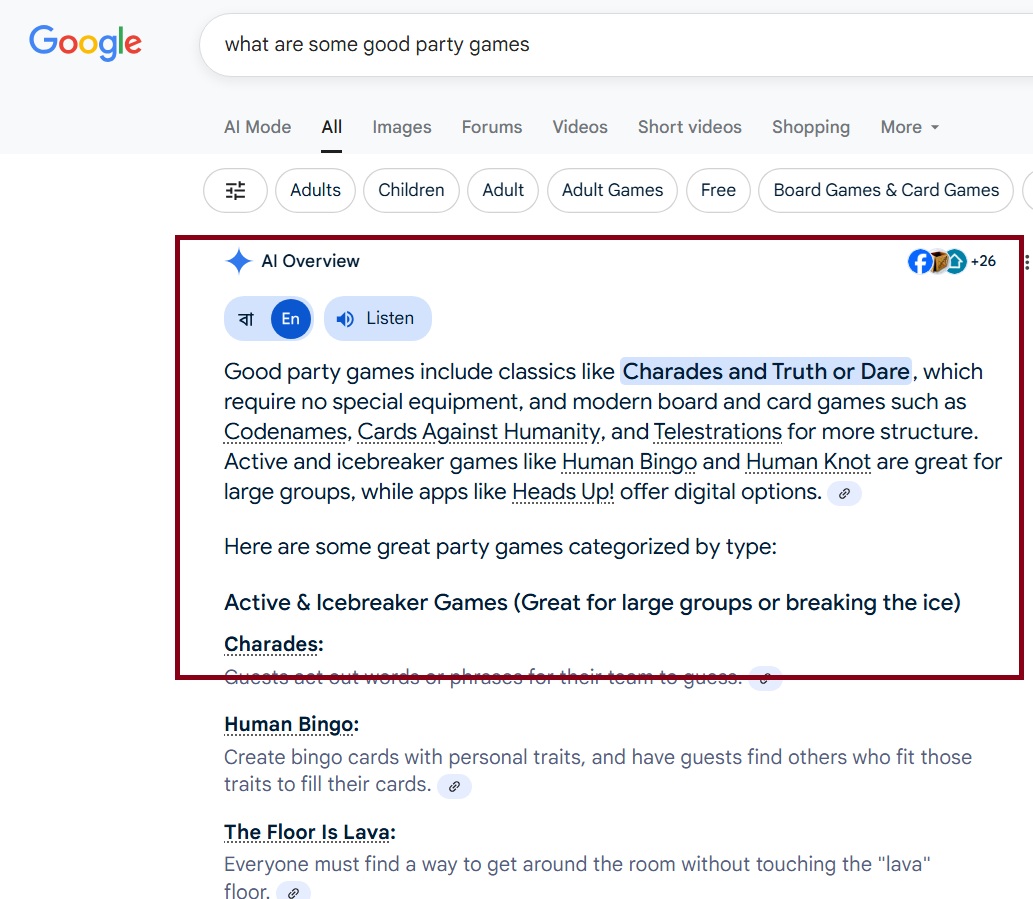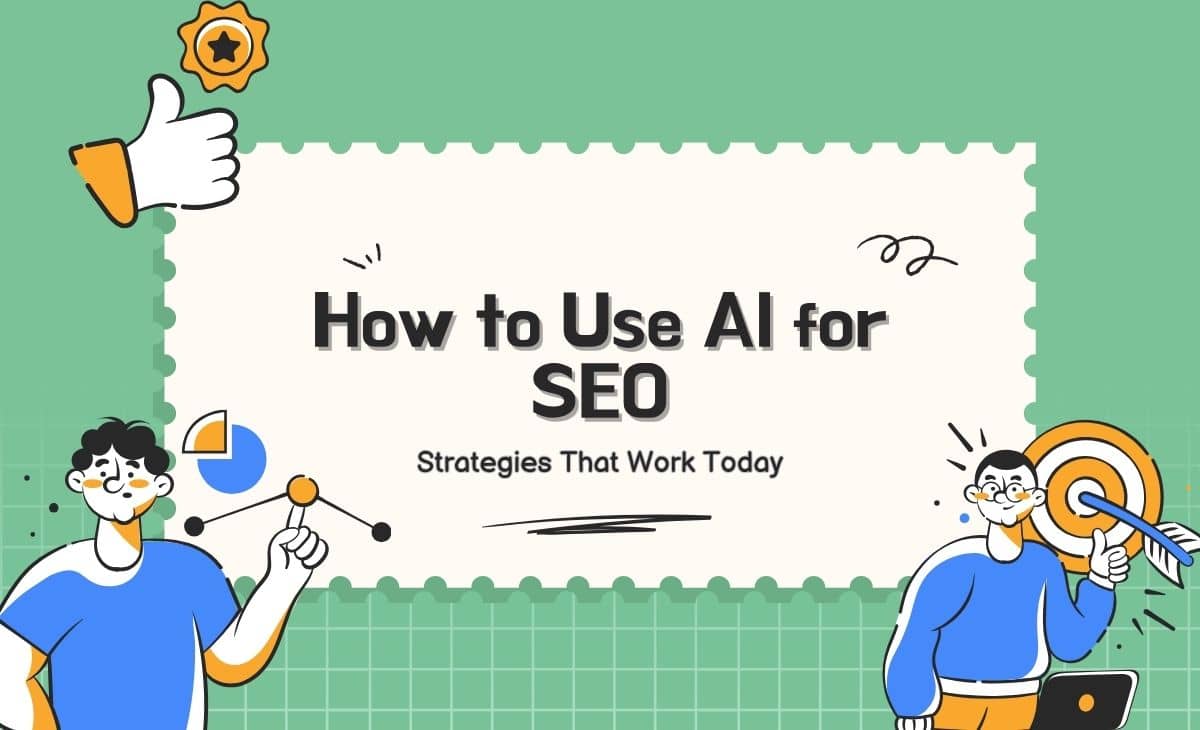When everyone is talking about how search is not the same, they don’t mean that Google is getting an upgrade. But the various factors that it analyzes and monitors to rank an article.
It's mainly because we now have a new member in the group: artificial intelligence. With AI making its presence felt in the global content market, the search dynamics have now evolved. At this point, search visibility is about how to use AI for SEO strategies and ranking on AI tools like ChatGPT, Gemini, Claude, etc.
If you're new to all this, let me assure you that it is not as overwhelming as it sounds. If you follow a strategic plan and understand a few guided steps, you are good to go. Keep reading as we discuss a planned strategy and leave with prompts, templates, and workflows that actually work today.
Why AI Is Changing SEO and Discovery
To begin with, let us understand what the hype is about. Initially, we were writing, and Google was evaluating it to rank. However, now with AI, our SEO strategy has diversified.
We are leveraging it to craft meaningful and strategic plans for this competitive market. Moreover, we are tapping into visibility in AI search and optimizing our content accordingly.
This new change is all about Google’s AI Overviews, part of Search Generative Experience (SGE). It’s those small snippets that you see when you search, and AI steps in to provide clear and quick overviews.

Now, this is a clear indicator of how traffic patterns are shifting in two distinctive ways.
- We now have to live with the possibility that a user might just never click through if they get everything in a quick snippet.
- Moreover, the AI assistants like ChatGPT, Perplexity, Gemini, and others are becoming trustworthy search companions; there is an urgent need to upgrade our content for that as well.
These two aspects have now changed our SEO strategies forever. Search engine optimization is not just about adding keywords nowadays. It’s about taking care of your content, formatted, structured, and authoritative enough to be pulled into AI answers as well. Not only that, the need to be true to the audience's search intent is another non-negotiable in this overall setup as well.
How the HUMANIZE Framework Makes AI Content More Authentic
Now, what does this mean for a marketer or a writer? The answer is simple: you have to make changes in your writing to keep up with this new dynamic. Or, what we call the Humanize framework.
- Hypothesis → Understand your user’s search intent before writing for them.
- Use data → Research relevant data, understand your user demographic.
- Map intent → Analyze what kind of content works (blog, FAQ, hub, guide).
- Assisted creation → Let dedicated AI tools like HumanizeAI.io help refine your work.
- Normalize quality →Assert more on quality than quantity.
- Index & schema → Add structured data, optimize intros.
- Zero-click defense → Target snippets, FAQs, “People Also Ask.”
- Evaluate → Do regular analysis of your content strategy.
Once your content is ready, the next step is optimizing it for search. Let us understand how you can use AI for SEO and maximise your chances of ranking.
7 Smart Ways to Use AI in SEO
Up until now, we were discussing how, as a writer, you can do more with your setup. Now, let us understand what the SEO forefront looks like with AI. If you wish to rank in any given setup in today’s time, you have to take a quick basic steps. Even though we all know SEO is a time-consuming process, following these trends will ensure you are on the right path.
AI-Assisted Keyword and Intent Research
You do not have to start with a blank sheet from here on. With artificial intelligence for SEO, you can actually have an understanding of what people are actually searching for.
This means you have unimaginable access to related terms, sub-topics, and user questions, and can use them to write your content.
This means when you write a piece on “best production management tools,” you do not linger only on the features. But you also address more relatable concerns like the stress of a new project, delay in submissions, and so on. Or, in short, how actual humans do a Google search in real life. ( Search Intent)
Building Topic Clusters & Topical Authority
Whether it is Google or any AI-generated search result, there is one thing they both have in common. They both value trustworthiness and authority. So, when you create a pillar and clusters around the topic, you get rewarded.
For example, A main guide on AI SEO (pillar) supported by deep dives into AI keyword research, AI content audits, and AI for multilingual SEO (clusters ). This not only stops your users from bouncing, but also convinces Google and AI algorithms that you know what you are saying.
💡An example of a quick sample prompt:
“Imagine you are an SEO strategist. I want to write about AI for SEO. Suggest 10 topic clusters, each with 5 subtopics and the user intent behind them. Format the output in a way that makes it easy to copy.”
Retrieval-Augmented Generation (RAG) for Accuracy
As you make significant progress in your AI journey, you must address AI hallucination concerns. That’s where retrieval-augmented generation (RAG) comes into the picture. It's a simple equation where AI doesn’t take control of the facts and figures. You feed the tool with your own documents, research, or verified sources so that the generated answers are accurate and don't disrupt SEO.
💡 Mini RAG Prompt Example:
“ChatGPT, you are connected to my research database. You can only use the uploaded sources to answer this: What are the latest proven AI SEO strategies in 2025? Make sure you cite sources wherever applicable to make it more refined.”
Human-in-the-Loop Editing & E-E-A-T Checklist
One of the most important aspects of SEO is being updated with Google’s E-E-A-T framework (Experience, Expertise, Authoritativeness, and Trustworthiness). Sometimes known as Google’s people-first content are a set of guidelines you need to follow if you wish to convince Google about your credibility.
To put it in simpler terms, Google has always been clear about how it doesn’t penalize AI content. However, at the same time, it has always stated how original human-written content will be rewarded.
Content that comes from a place of credibility and trust and highlights expertise will surely have more favorable results. Hence, your writing should always sound human and assert its dominance to make the users trust it.
For example, if you are writing on “how to improve website speed,” you cannot repeat generic tips. Instead, show screenshots from your own site audits, explain how certain plugins worked (or failed), and add performance data before and after. This alerts Google and your readers that you are highlighting lived experience.
| This is where Humanize AI also comes into the picture. While AI can generate drafts at scale, Humanize AI ensures your content doesn’t sound robotic or generic. It helps refine tone, add natural flow, and infuse the credibility signals Google’s E-E-A-T framework looks for. Moreover, with the relaunch, we bring in more tools that can aid you with overall writing support and make sure you keep up with the Google checklist. |
Multilingual & Global SEO (GEO)
If you plan to go global, you simply cannot rely on one language. Ranking for a different language needs a website upgrade, and so many other technicalities.
The simplest way for you to do this is by making sure that when building a multilingual website, you stay true to its essence. Which means you not only fine-tune but also add cultural references and keywords. Moreover, the content needs to feel natural and authentic for people in those regions.
Or, you can also rely on AI tools like Humanize AI’s language translator and easily upgrade your website to more than 25+ languages. This saves time and gives you a starting point, and helps you chalk out the next steps.
Don’t forget to consider the following technical aspects:
- Add hreflang tags ( So that Google knows which country/ region to show).
- Use localized schema markup so AI and search engines know what language/region the page is for.
Structured Data & Snippet Optimization
When you are writing to impress Google and AI search engines, you must know that structured content is your best friend. Search engines and AI assistants prefer information that’s easy to understand and extract.
- With the help of AI, you can automatically identify potential FAQs from your content and suggest schema markup for them.
- Generate HowTo schemas for step-by-step guides or tutorials.
- Draft clean JSON-LD code so you don’t need to build it from scratch.
Pro tip: Refine the first 150 words of your article. This is the section most likely to be pulled into AI summaries
AI-Powered Insights & Testing
Relying on AI to take care of your SEO is a continuous process. As you implement all the suggestions and decide what’s best for you, the next step includes keeping a track of your progress.
Modern AI-powered tools can analyze impressions, CTR, rankings, and even track how often your content is cited in AI search results. You can also use AI to:
- Quickly automate A/B testing for titles, meta descriptions, and intros.
- Keep track of all your AI and human-generated content for a better data analysis.
- Spot early trends from Google Search Console or analytics data that humans might overlook.
Think of it as a constant vigil that highlights any miss at an instant and makes sure you never miss out. A setup like this also eliminates any room for guesswork and helps you navigate with full confidence.
Future-Proofing Your SEO with AI
One might think that, as we start considering AI in the SEO space, we mean a complete displacement of humans. But that’s far from the truth. Whether it is for smarter keyword research, understanding the search intent, or preparing for multilingual content or AI-powered structured data, the goal remains the same: create content that not only informs or engages but builds trust as well.
The only way to win in today’s market is by acknowledging that nothing can replace AI+ Human Expertise. Artificial intelligence brings you speed, scale, and structure, while humans bring credibility, originality, and emotions.
A combination of both not only paves the way for optimizing content for Google but also helps you excel in the new wave of AI-driven discovery engines like ChatGPT, Gemini, and Perplexity.
We are not focused solely on ranking in the new era, but it's about limitless visibility. Whenever someone searches for an answer, our goal is to conquer that space. As you future-proof your SEO strategies, don’t forget to keep in mind what we discussed and you will see the results with time.

